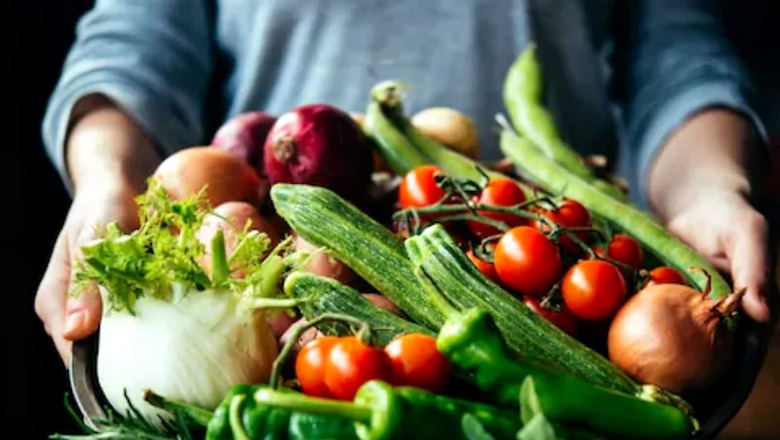
views
A steep rise in vegetable prices has left the consumer wondering what to leave out of the daily diet as rates of essential commodities continue to put a squeeze on household budgets. A pan-India study conducted by community social media platform LocalCircles found that 76% households surveyed said monthly expenditure on vegetables has increased by over 25-100% in the last 2 years.
India’s retail inflation continued its rise in September to a five-month high of 7.41% year-on-year, driven by surging food prices, according to data released by the National Statistics Office on October 12. Inflation in the food basket, which currently has 50% share in the retail inflation, rose to 8.60% in September as against 7.62% in the previous month. Erratic and unseasonal rains have led to a further rise in prices of vegetables, cereals and pulses. This scenario continued in October, with only prices of select vegetables softening in some parts of the country, where they are grown, compared to last month.
The findings of the survey revealed that 36% households are now spending 25-50% more to buy vegetables; 31% of the respondents put the increased expenditure to 50-100%, and 9% to over 100% increase. Unless it is locally grown, vegetable prices vary according to the distance it has to be transported from the farm to the market as the transportation costs get added. Thus, the price of the same vegetable can vary from district to district. The locality where the vegetable is bought from also influences the price and quality of the produce as it is dictated by the buyers.
The LocalCircles survey received responses from over 22,000 household consumers located in over 307 districts of the country. 63% respondents were men while 37% respondents were women. 42% respondents were from tier 1, 33% from tier 2 and 25% respondents were from tier 3, 4, and rural districts.
The survey also revealed that while 4% felt the prices had risen only up to 10% and 16% felt the prices had risen by 10-25%, there was no one who was not impacted, though 4% of the respondents gave no clear indication.
1 in 2 households surveyed said on average they paid more than Rs 50/kg for tomato, Rs 30/kg for onion, and Rs 25/kg for potato this year.
27% of the respondents said they bought tomato for Rs 60 or higher, onion Rs 35 or higher and potato Rs 30 or higher. 23% revealed that they have paid Rs 50-60 for tomato, Rs 30-35 for onion, Rs 25-30 for potato. Another 7% respondents bought tomato for Rs 40-50, onion Rs 25-30 and potato Rs 20-25; in addition, 20% paid less for tomato Rs 40 or lower, onion Rs 25 or lower, and potato Rs 20 or lower. The survey had a large segment of 23% respondents who did not give any clear answer. On an aggregate basis, 50% households said on average they paid more than Rs 50/kg for tomato, Rs 30/kg for onion and Rs 25/kg for potato this year.
As per the data released by the National Statistical Office (NSO), inflation in the food basket was 7.62% in August 2022, up from 6.69% in July 2022 and 3.11% in August 2021. On an annual basis, the vegetable price rise was reported more than 10%. However, what household consumers are reporting in the survey is considerably higher than that.
In summary, as the survey reveals, the majority of the households (76%) are paying 25% or higher prices for vegetables than in 2020 with 40% of the 76% saying their monthly expenditure on vegetables has risen by over 50% in the last 2 years. While there are influencing factors like extended monsoon, pest problems, water-logging, etc, which impact production and availability, analysts feel it is time for forward-thinking by the policymakers as this problem of shortage and price rise during the monsoon and immediately after if the crops are damaged, has become the norm.
There is also the problem of farmers having to pay much more to reach the mandis or other sale points as transportation costs have increased from what they were in 2020.
Read all the Latest India News here
















Comments
0 comment